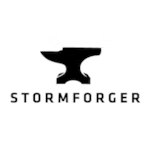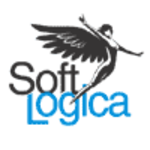Description

StormForge

testomat.io
Comprehensive Overview: StormForge vs testomat.io
StormForge
a) Primary Functions and Target Market:
-
Primary Functions: StormForge is a robust platform designed for optimizing Kubernetes application performance. It achieves this by combining Kubernetes-native performance testing with machine learning to automatically identify optimal configurations. The primary goal is to maximize resource efficiency while ensuring applications meet performance requirements.
-
Target Market: StormForge targets enterprises that utilize Kubernetes for deploying and managing containerized applications. This includes DevOps teams, cloud service providers, and businesses undergoing digital transformation that are looking to improve application performance and reduce cloud costs.
b) Market Share and User Base:
-
Overall Market Share: Being a specialized tool in the Kubernetes ecosystem, StormForge caters to a niche segment of enterprises that specifically leverage Kubernetes for their operations. While exact market share figures are not typically public, its adoption is growing alongside the increasing use of Kubernetes in enterprise environments.
-
User Base: Generally consists of midsize to large enterprises, particularly in technology, financial services, and e-commerce that prioritize application performance and cost-management through container orchestration.
c) Key Differentiating Factors:
-
Machine Learning Optimization: One of StormForge's unique selling points is its use of machine learning algorithms to automate the process of configuration optimization in Kubernetes environments.
-
Integration with Kubernetes: Specifically designed to work within Kubernetes, making it a very focused tool for those already using this container orchestration platform.
testomat.io
a) Primary Functions and Target Market:
-
Primary Functions: Testomat.io is a test management tool aimed at improving the productivity and efficiency of software testing teams. It offers comprehensive management of the testing lifecycle, including test case management, execution, and reporting.
-
Target Market: Primarily suits software development teams, QA engineers, and test managers working in agile environments. It is especially beneficial for organizations looking to streamline their testing processes and integrate testing within their CI/CD pipelines.
b) Market Share and User Base:
-
Overall Market Share: Competes in the broader test management and software quality assurance market. It’s one of many tools in this vertical, thus its market share is relatively modest compared to longstanding players.
-
User Base: Typically includes small to large enterprises engaged in software development, with a focus on teams seeking to automate and optimize their testing processes.
c) Key Differentiating Factors:
-
Collaboration Features: It offers strong capabilities for collaboration among development and testing teams, enhancing productivity and communication.
-
CI/CD Integration: Seamlessly integrates with continuous integration and continuous deployment tools, supporting agile and DevOps methodologies.
Tricentis Tosca
a) Primary Functions and Target Market:
-
Primary Functions: Tricentis Tosca is a comprehensive testing tool that offers end-to-end test automation. It's known for its model-based testing approach that enables faster test creation and maintenance, supporting broad technology and platform coverage.
-
Target Market: Geared towards enterprise-level organizations across various industries looking for comprehensive test automation solutions. It caters to both functional and non-functional testing needs.
b) Market Share and User Base:
-
Overall Market Share: Tricentis Tosca is considered one of the leading test automation platforms, with significant market share among enterprise solutions. It is widely adopted within industries such as finance, insurance, healthcare, and retail.
-
User Base: Typically large enterprises with significant testing demands. Its users span across various industries, focusing on organizations in need of extensive automation capabilities.
c) Key Differentiating Factors:
-
Model-Based Testing Approach: Tosca stands out with its model-based testing, making test automation more accessible and reducing the need for scripting.
-
Broad Coverage and Integration: Extensive support for different technologies and platforms, and easy integration with other tools, which supports varied application landscapes.
Comparative Overview
-
Target Market: StormForge is niche-focused on Kubernetes users. Testomat.io aims at QA-centered software development teams. Tricentis Tosca addresses enterprise-level needs with a broader scope of automation.
-
Technological Approach: StormForge relies heavily on machine learning for optimization. Testomat.io focuses on seamless test management and collaboration. Tricentis offers a unique model-based testing approach with extensive technological support.
-
Market Position: Tricentis Tosca commands significant market authority and user base compared to the more niche-focused StormForge and testomat.io, which cater to specific needs within their respective domains.
Each of these products offers unique advantages tailored to their specific niches, making them appealing to organizations based upon their individual needs in terms of automation, optimization, and integration within existing processes.
Contact Info

Year founded :
2015
+1 617-209-3159
Not Available
United States
http://www.linkedin.com/company/stormforge

Year founded :
2020
+48 79 410 25 65
Not Available
Poland
http://www.linkedin.com/company/testomatio
Feature Similarity Breakdown: StormForge, testomat.io
When comparing StormForge, testomat.io, and Tricentis Tosca, it's helpful to consider their core functionalities, user interfaces, and any unique features that distinguish them. Here’s a breakdown:
a) Core Features in Common
-
Test Automation:
- All three platforms emphasize the automation of tests to streamline the software development process, reduce time-to-market, and increase efficiency.
-
Integration Capabilities:
- They offer integrations with various CI/CD tools and other development frameworks to embed seamlessly into existing workflows.
-
Reporting and Analytics:
- These tools provide reporting features that give insights into test results and performance metrics, aiding in decision-making and quality assurance.
-
Scalability:
- They are designed to handle tests at scale, supporting large development environments and complex test cases.
b) User Interface Comparison
-
StormForge:
- Primarily focused on performance testing and optimization, StormForge presents a UI that emphasizes graphical data representation and analysis. The interface is designed to be intuitive for performance metrics and optimization results, making it visually accessible for performance engineers.
-
testomat.io:
- testomat.io has a user-friendly interface tailored to test management. It emphasizes ease of navigation and a minimalistic design, which facilitates collaboration among team members, focusing on BDD (Behavior Driven Development) processes and test case management.
-
Tricentis Tosca:
- Tricentis Tosca has a sophisticated UI with comprehensive dashboards that cater to enterprise-level testing needs. It's designed for complex automated testing scenarios, offering a wide array of visualization options for different test types and results.
c) Unique Features
-
StormForge:
- Machine Learning-Driven Insights: One unique feature of StormForge is its use of machine learning algorithms to optimize application performance, specifically in cloud environments. By analyzing performance data, StormForge offers actionable recommendations to improve efficiency.
-
testomat.io:
- BDD Support: testomat.io uniquely supports Behavior-Driven Development workflows, allowing teams to create Gherkin-based test cases and integrate them seamlessly into the development lifecycle. This focus on BDD makes it particularly useful for teams following agile methodologies.
-
Tricentis Tosca:
- Model-Based Testing: Tosca's standout feature is its model-based testing approach, which allows users to create a model of the application to generate test cases automatically. This capability reduces the maintenance burden and enhances test coverage.
Each product is designed with particular strengths, catering to different aspects of the testing process, from performance optimization to seamless BDD integration and comprehensive enterprise-level automation.
Features

Cost Management
Advanced Performance Optimization
User-Friendly Dashboard

Test Management
Collaboration Tools
Usability
Automation Integration
Support and Resources
Best Fit Use Cases: StormForge, testomat.io
StormForge, testomat.io, and Tricentis Tosca are distinct tools with unique strengths suited for different business needs and projects. Here's an overview of the best fit use cases for each:
a) StormForge:
Best Fit for:
- Businesses with Cloud-Native & Kubernetes Environments: StormForge is ideal for companies leveraging cloud-native architectures, specifically those using Kubernetes, as it optimizes applications running in these environments.
- Enterprises Focused on Performance Optimization: Organizations that prioritize application performance and resource efficiency, particularly those with fluctuating workloads, can benefit from StormForge's AI-driven insights.
- DevOps and SRE Teams: Companies that have strong DevOps practices and need to integrate performance testing into their CI/CD pipelines.
Industry Fit:
- Technology and SaaS Companies: Especially those offering cloud services or platforms.
- E-commerce: Businesses that require high scalability and performance amidst changing traffic loads.
- Finance: Firms that need to ensure efficient and fast processing times for applications.
b) Testomat.io:
Best Fit for:
- Agile Development Teams: Testomat.io is suited for agile teams that require rapid test case management and collaboration.
- Projects Needing Integration with CI/CD: The tool is optimal for software development environments where continuous integration and delivery are practiced.
- Teams Emphasizing BDD/TDD Practices: Organizations that focus on Behavior-Driven Development or Test-Driven Development benefit from Testomat.io’s support for these methodologies.
Industry Fit:
- SMEs and Startups: Especially those focused on rapid feature delivery and agile methodologies.
- Digital Agencies: Where rapid iterations and feedback loops are necessary.
- Education & Research: Institutions that need a manageable yet robust testing interface.
c) Tricentis Tosca:
Best Fit for:
- Large Enterprises with Complex Testing Needs: Tosca is designed for enterprises that require end-to-end testing across multiple platforms and technologies.
- Businesses with Compliance Requirements: It’s ideal for industries where software quality and compliance are critical, such as healthcare and banking.
- Companies Needing Scriptless Automation: Organizations that prefer a scriptless approach for functional and regression testing can efficiently use Tosca’s model-based testing.
Industry Fit:
- Financial Services and Insurance: Sectors where compliance and extensive testing across ERP, BPM, and CRM systems are crucial.
- Healthcare: Companies needing precise and reliable testing tools due to regulatory requirements.
- Telecommunications: Large-scale businesses requiring robust testing workflows that handle complex processes.
d) Catering to Different Industries and Company Sizes:
- StormForge is best suited for industries heavily invested in cloud infrastructure and digital transformation with flexible scaling requirements, thus, primarily targeting medium to large companies with technical sophistication.
- Testomat.io caters well to small to medium enterprises (SMEs) focusing on agile and iterative development processes. It is particularly useful for teams needing a lightweight yet effective test management solution.
- Tricentis Tosca is optimal for large enterprises across diverse industry verticals that need a unified testing platform to manage extensive, enterprise-level application suites. Its comprehensive testing capabilities are well-aligned with complex IT landscapes in highly regulated industries.
Each tool serves a specific niche with overlap in some functionalities but distinctively serves different business needs, reflective of their core functionalities and designed use cases.
Pricing

Pricing Not Available

Pricing Not Available
Metrics History
Metrics History
Comparing teamSize across companies
Conclusion & Final Verdict: StormForge vs testomat.io
When evaluating StormForge, testomat.io, and Tricentis Tosca, it is crucial to consider factors such as functionality, scalability, ease of use, integration capabilities, pricing, and customer support. Each tool has its own strengths, making them suitable for different types of users and use cases. Here's a detailed analysis:
a) Best Overall Value
Best Overall Value: Tricentis Tosca
Tricentis Tosca offers the best overall value, primarily due to its comprehensive suite of features, strong industry reputation, and ability to support a wide range of testing needs. While it may come at a higher price point, the value is evident in its automation capabilities and extensive integration options, providing long-term benefits for large-scale enterprises.
b) Pros and Cons
StormForge
- Pros:
- Specializes in performance optimization with AI-driven insights.
- Excellent for Kubernetes environments.
- Offers strong analytics for resource management.
- Easy to set up and use for cloud-native applications.
- Cons:
- Limited in terms of general testing capabilities; focuses more on optimization.
- May not cater to traditional testing needs beyond cloud environments.
testomat.io
- Pros:
- User-friendly interface with a focus on test management.
- Strong integration with CI/CD tools and other testing frameworks.
- Offers collaborative features for agile teams.
- Competitive pricing, making it cost-effective for small to medium teams.
- Cons:
- Limited scope in terms of automation capabilities compared to more comprehensive tools like Tosca.
- Mostly beneficial for managing test cases rather than executing complex tests.
Tricentis Tosca
- Pros:
- Robust test automation features with model-based testing.
- Supports a wide range of applications and technologies.
- Strong support for enterprise-level environments and complex testing scenarios.
- Rich set of integrations and continuous testing capabilities.
- Cons:
- Higher cost, which might be prohibitive for small businesses.
- Steeper learning curve due to its comprehensive features.
c) Specific Recommendations
-
For Users Focused on Kubernetes and Cloud Optimization: Choose StormForge if your primary need is performance optimization within Kubernetes environments and you are looking for AI-driven insights to optimize your cloud resources efficiently.
-
For Agile Teams Seeking Test Management: Go with testomat.io if you need a user-friendly platform for managing test cases and want smooth integration with your existing CI/CD pipeline at a reasonable cost.
-
For Enterprise-Level Automation Needs: Select Tricentis Tosca if you require a highly versatile and powerful test automation tool that supports complex testing scenarios and extensive integrations, especially if you're part of a large organization with a diverse tech stack.
Each of these tools serves different purposes and excels in different areas. The best choice depends on your specific needs, existing infrastructure, and budget. Carefully consider where each tool's strengths align with your testing goals to make the most informed decision.
Add to compare
Add similar companies



